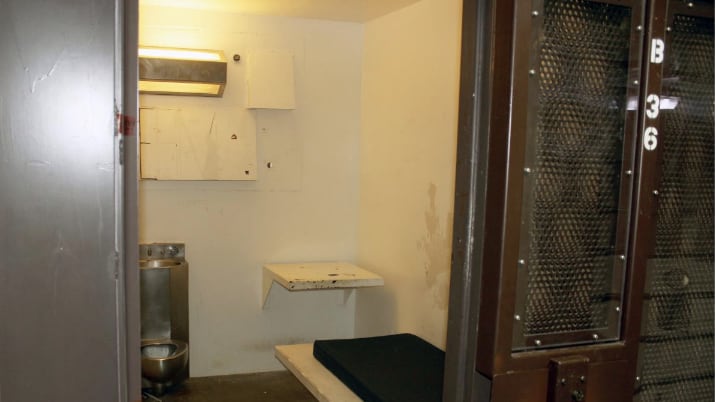A new report by the federally funded watchdog group Disability Rights Oregon finds that five years after a damning examination of conditions for Oregon State Penitentiary inmates experiencing severe mental illness, conditions have improved.
DRO found that inmates in the behavioral health unit, who number about 50, got better treatment from more highly trained staff, including a psychiatrist; experienced less abuse from corrections officers; spent less time in the unit; were more likely to get transferred into the general population; and, most importantly, were less isolated.
“The most important of those achievements is that inmates housed in the BHU spent more time out of their cells in therapeutic programming and interaction with others,” the report says. “It is well established that prolonged isolation only exacerbates mental illness and can result in serious harm and unsafe conditions.”
DRO’s original examination of conditions for inmates experiencing serious mental illness at OSP, the state’s oldest and only maximum security prison, included horrifying descriptions of the conditions those inmates faced.
“Poorly addressed mental illness and the pervasive despair of the BHU frequently lead to self-harm,” the 2015 report found. “In fact, harming oneself seems to be accepted as a reasonable way to secure attention from the mental health staff. Some men bash their heads against the walls, others obtain razor blades and slice their wrists, and some attempt to hang themselves by creating nooses from their bedsheets.”
At that time, DRO found that inmates were often left in the behavioral health unit with no way out, brutalized by “extraction teams,” and confined to their windowless cells for more than 23 hours per day, depriving them of access to showers, exercise and meaningful human interactions.
As a result of its findings, DRO entered into a memorandum of understanding with the Oregon Department of Corrections as an alternative to suing the agency to improve conditions. An interim report in 2018 found limited improvement, but things have gotten better since then. Now, inmates on the behavioral health unit are out of their cells for about three hours a day—not much, but triple what they were allowed prior to the watchdog group’s intervention.
The memorandum of understanding between DRO and the Department of Corrections expired in 2020, but DRO said in its report it believes the improvements it documented are sustainable.
“It is hard to quantify what it means for BHU inmates to be able to live in a place where forced cell extractions, self-injurious behavior, and attempted suicide are no longer a common sight,” the report said. “The importance of these indicators of improvement at the BHU cannot be overstated.”
The report noted a larger problem that goes beyond the specific issues at the behavioral health unit: More than 7,000 of the state’s nearly 13,000 inmates suffer from some form of mental illness.
In a statement, DRO executive director Jake Cornett applauded the improvements for the most seriously mentally ill inmates but said the best result would be finding a way to keep mentally ill inmates out of prison.
“After four years of advocacy, inmates with serious mental illness are being treated more humanely, and we’ve made real progress toward providing the behavioral health care they need,” Cornett said. “Improvements to behavioral health care in the corrections system are important, but more must be done to keep people with mental illness out of the criminal justice system in the first place.”
